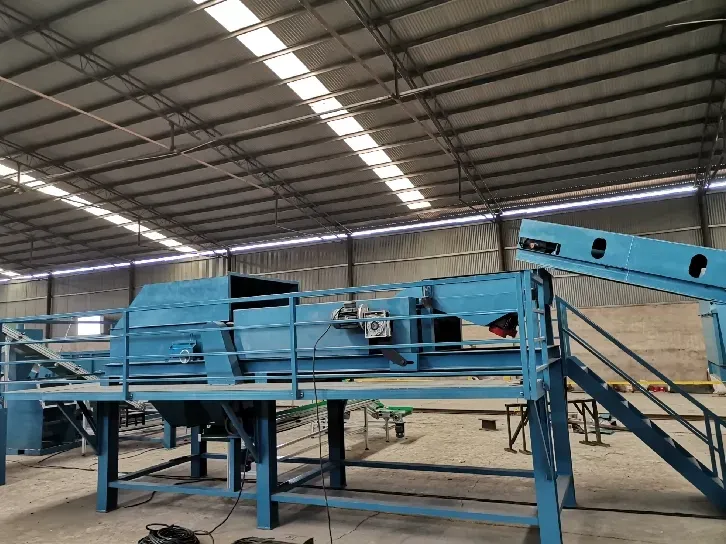
10 月 . 02, 2024 13:47 Back to list
Understanding Small Eddy Current Separators A Breakthrough in Material Recycling
In recent years, the rising global demand for effective and sustainable recycling solutions has highlighted the importance of innovative technologies in material separation. One such technology that has garnered attention is the small eddy current separator. This equipment has emerged as a crucial component in recycling operations, particularly for the recovery of non-ferrous metals from mixed waste streams.
Eddy current separation is a technique that utilizes the principle of electromagnetic induction to separate conductive materials from non-conductive materials. The process begins when the mixed material is fed onto a conveyor belt that moves it towards a rotating drum. This drum is equipped with powerful magnets, which generate rapidly alternating magnetic fields. When non-ferrous metals, such as aluminum and copper, pass through this magnetic field, they experience the eddy current effect. This effect induces a magnetic field in the conductive materials, which interacts with the magnetic field of the drum. As a result, the non-ferrous metals are propelled away from the non-conductive materials, effectively separating the two.
One of the primary advantages of small eddy current separators is their compact design. Unlike larger separators, which may require substantial space and infrastructure, small eddy current separators can fit easily into various processing environments. This makes them ideal for facilities that have limited space or are just starting to implement recycling operations. Additionally, their relatively low operating cost compared to larger counterparts makes them an attractive solution for small to medium-sized recycling businesses.
Moreover, small eddy current separators are highly efficient and effective in recovering valuable materials. By dedicating resources to separate non-ferrous metals, recycling facilities can significantly improve their overall yield and profitability. The recovered metals can then be reintroduced into manufacturing processes, reducing the need for virgin materials and promoting a circular economy.

Another remarkable feature of small eddy current separators is their ability to adapt to different material compositions. They can efficiently process a wide range of materials, including post-consumer goods, industrial waste, and specific e-waste. This adaptability makes them suitable for various sectors, from municipal recycling facilities to large-scale industrial operations.
In addition to their technical advantages, small eddy current separators also contribute to environmental sustainability. By enhancing the efficiency of material recovery, these separators play a vital role in reducing landfill waste and conserving natural resources. The recycling of non-ferrous metals is particularly crucial, as the extraction and processing of these materials typically involve significant energy consumption and environmental degradation. The use of small eddy current separators thus aligns with global efforts to minimize the ecological footprint of human activities.
Another consideration that has made small eddy current separators appealing is their user-friendly design. Many modern separators come equipped with advanced control systems that allow operators to adjust parameters easily to optimize performance. This not only enhances efficiency but also minimizes downtime and maintenance needs, contributing to the overall productivity of recycling operations.
While small eddy current separators present numerous advantages, it is essential for businesses to consider their specific needs and the characteristics of the materials being processed. Conducting a thorough assessment can help in selecting the right equipment that will maximize recovery rates and enhance operational efficiency.
In conclusion, small eddy current separators represent a significant advancement in the field of material recycling. Their compact design, efficiency in separating non-ferrous metals, adaptability to various materials, and contribution to environmental sustainability make them invaluable tools for modern recycling operations. As the industry continues to evolve, embracing technologies such as eddy current separation will be crucial in achieving more sustainable and efficient resource management. As more businesses adopt these technologies, we can look forward to a future where recycling becomes more effective, helping to create a cleaner and greener planet.
Latest news
Unveiling the Power of Eddy Current Separator
NewsSep.25,2024
Transform Your Home Recyclin:home metal shredder
NewsSep.25,2024
The Future of Waste Management with Recycling Line Picker
NewsSep.25,2024
The Benefits of a Metal Recycling Plant
NewsSep.25,2024
Revolutionize Material Separation with Onwang Technology
NewsSep.25,2024
Innovative Waste Management: Unveiling the MSW Sorting Plant
NewsSep.25,2024